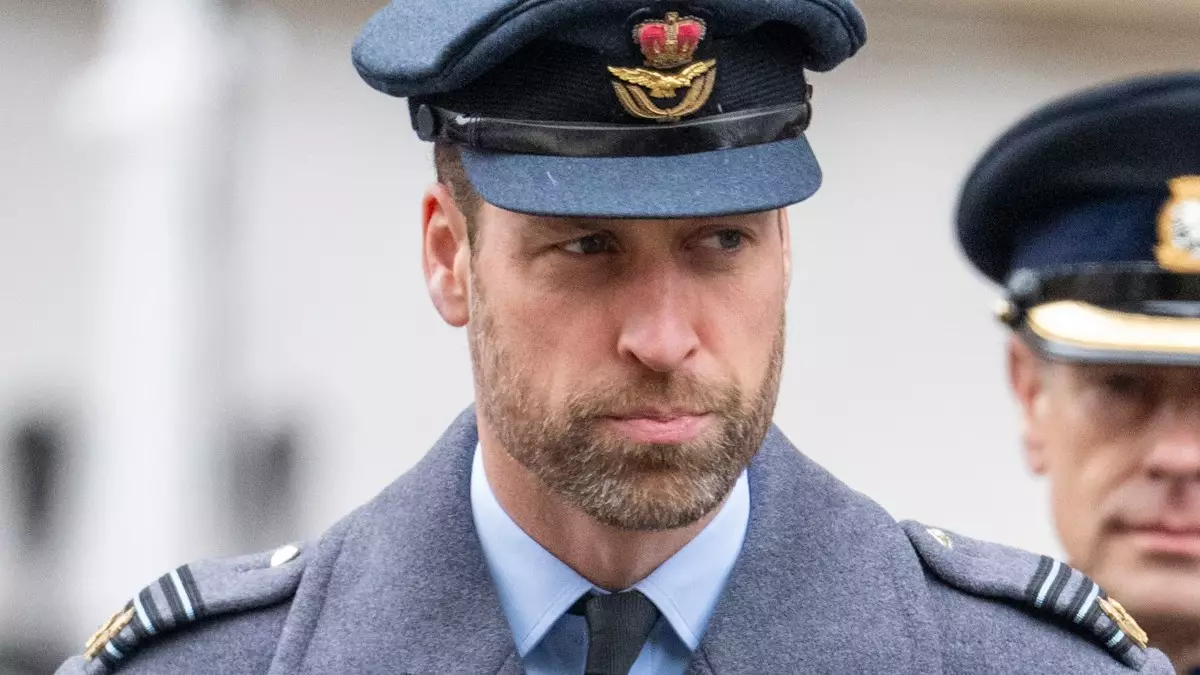The public perception of royal figures often hinges on their presentation, and for the first time in nearly a decade, Prince William’s recent decision to sport a beard has sparked significant conversations and reactions. This new look is not merely a shift in style but appears to symbolize a transition in royal identity that may resonate with modern sentiments.
During the annual Remembrance Sunday service at the Cenotaph, Prince William stepped out not just in his traditional Royal Air Force uniform but also with a well-groomed beard that captured the attention of both attendees and online audiences. His presence at such a momentous occasion underscored the dignity and reverence the event commands. However, it was the combination of his ceremonial attire and newfound facial hair that led to a wave of admiration across social media. Posts featuring William’s appearance amassed thousands of views, with many expressing how the beard has transformed his look in a positive light.
Social media platforms have become arenas for public opinion, and it was no different following the Remembrance Sunday service. With the usage of TikTok and Instagram, fans enthusiastically chimed in with comments praising the Prince’s rugged appearance. The consensus among admirers was clear: the beard has added an appealing dimension to his overall demeanor. Some users even humorously suggested that a beard has the potential to change one’s life, reflecting a broader societal trend toward appreciating facial hair in male fashion.
Prince Harry’s memoir “Spare” provides insight into the nuanced opinions regarding facial hair within the royal family. It highlights an underlying rivalry between the brothers, where facial grooming becomes a metaphor for differing generational values and interpretations of tradition. Harry describes being granted permission by their grandmother, the late Queen, to wear a beard on his wedding day—an allowance that was reportedly denied to William. This familial dynamic suggests that personal choices about appearance are tightly interwoven with royal protocols and historical norms.
The portrayal of facial hair in the royal family has evolved over time. While many historical kings sported beards, William’s earlier adherence to a clean-shaven look signifies a commitment to traditional standards. However, Harry’s anecdotes suggest that these standards are not immutable. By deciding to grow his beard, William appears to be asserting a personal stance against the rigid conventions dictated by royal customs. This pivot may also be a subtle nod to contemporaneous fashion trends, signaling an alignment with a more modern image of masculinity.
It is intriguing to consider the implications behind William’s choice to embrace facial hair at this point in his life. More than merely following fashion, it could represent an evolution in his approach to royal duties—offering a glimpse into a more approachable and relatable monarchy. His remarks about wanting to connect with his generation could be a catalyst for this change, as he negotiates the fine line between tradition and modernity.
William’s newfound style decision could very well be a reflection of his broader vision for the monarchy, one that seeks to adapt to the expectations of younger audiences while retaining the core principles that embody royal duties. This embrace of a bearded look might serve as a deliberate choice to foster an image that resonates more closely with public perception, aspiring to a monarchy that embraces contemporary values.
Ultimately, Prince William’s recent choice to wear a beard carries layers of significance that extend beyond mere aesthetics. It prompts discussions around tradition versus modernity, familial expectations, and the role of contemporary male identity. As the future King seeks to create a legacy that reflects both reverence for the past and an embrace of current values, his beard could very well become a symbol of a new era within the British monarchy. Such transitions in royal presentation will likely continue to evoke curiosity, offering a fresh perspective on how the monarchy can evolve while honoring its illustrious history.

